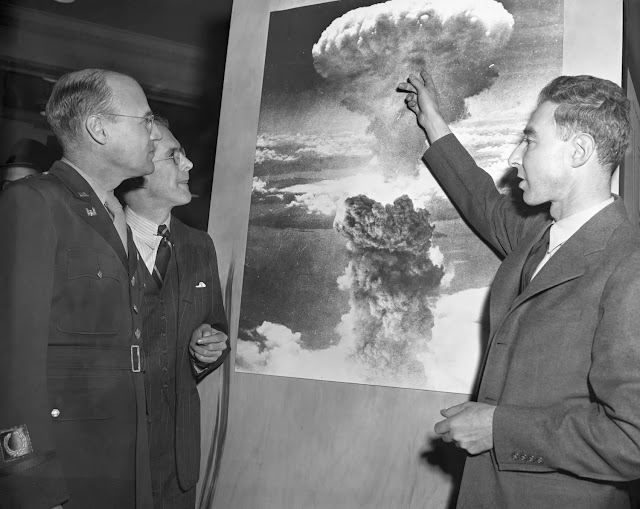Why reactor number 4 at Chernobyl exploded in 1986
In 1986, one of the most devastating nuclear accidents in history occurred at reactor number 4 of the Chernobyl Nuclear Power Plant(ChNPP). To understand why this disaster happened, we must delve into the intricacies of nuclear reactors and how they operate.
----------
Nuclear reactors work on the principle of nuclear fission, where atoms of uranium or plutonium are split into smaller, lighter atoms, releasing a significant amount of energy in the process. This reaction also produces high-energy neutrons, which play a crucial role in sustaining the chain reaction within the reactor core.
The core of a nuclear reactor is carefully balanced to maintain an average of one neutron per reaction. If the number of neutrons is slightly higher, the reaction rate will increase, and if it is slightly lower, the reaction rate will decrease over time.
During fission, each atom releases two to three high-energy neutrons. These excess neutrons must be managed to maintain a stable reaction. Some neutrons can go on to trigger more fission events, some may escape the core, while others can be absorbed by materials that do not undergo fission.
To control the neutron population and keep the reaction rate constant, reactors are equipped with materials like boron or cadmium, which act as neutron absorbers. These materials can be in the form of movable control rods that are inserted or withdrawn from the core to dynamically adjust neutron absorption.
At Chernobyl, the reactors were the RBMK (Reaktor Bolshoy Moshchnosty Kanalny) design, translated as a high-power channel-type reactor. This design utilized graphite blocks as moderators to slow down the high-energy neutrons, enabling the reactor to use unenriched natural uranium as fuel without the need for heavy water and made it a very cost-effective design.A critical event leading to the disaster was a scheduled test on the night of the accident. The reactor was to be shut down for maintenance, but cooling had to continue. Emergency diesel generators were available to power the cooling water pumps, but they needed about a minute to start. To provide power during this critical minute, the spinning turbines and generators were relied upon.
However, on that day, due to increased energy demand on the power grid, the reactor couldn't be taken offline as planned and continued operating at a relatively high power level. The test required a power reduction to about 700 megawatts, but the reactor had been running at around 1,600 megawatts for most of the day.
As the power reduction started, xenon-135, a critical fission product with a strong neutron-absorbing capability, began building up in the core. Xenon-135 takes time to accumulate, and its absorption of neutrons reduced the reaction rate further.
The operators tried to restore the reactor's power for the test, leading them to pull out many control rods to reduce neutron absorption. They believed they could always reinsert the rods in case of emergency.
However, this move pushed the reactor into an unstable state, with positive void coefficient coming into play. The void coefficient is a measure of how reactor power changes with voids or steam bubbles in the coolant. The RBMK reactor design had a positive void coefficient for low water flow rates, which meant that when power dropped, water absorption of neutrons increased, further slowing down the reaction.
In an effort to increase power for the test, the operators manually pulled out a large number of control rods, and with so few rods left to control the core, the reactor's power began to rise rapidly. This led to a sudden and uncontrollable surge in power, causing an explosion that blew the top off the reactor.
The explosion released a massive amount of radioactive material into the atmosphere, resulting in catastrophic consequences for the surrounding area and its inhabitants. The precise mechanics of the explosion are still debated, but it's clear that the reactor was pushed beyond its design limits, leading to a catastrophic failure.
This was a devastating event that sent shockwaves not only through the nuclear industry but also across the globe. The initial explosion ruptured the reactor vessel, releasing a massive plume of radioactive material into the atmosphere. The true scale of the disaster became apparent when radiation was detected in distant countries(across Europe) contaminating large areas with lethal levels of radiation., emphasizing the global nature of nuclear accidents.
The disaster was a wake-up call for the nuclear industry, prompting significant changes in reactor design and safety protocols worldwide. Many RBMK reactors were later retrofitted to address the shortcomings that contributed to the catastrophe.
Coda:
The Chernobyl disaster was a grim reminder of the potential dangers of nuclear power when not managed with utmost care and adherence to safety protocols. It prompted significant changes in reactor design and safety practices worldwide, but it also underscored the need for continuous vigilance in the operation of nuclear facilities. Despite this tragedy, scientific analysis has shown that nuclear power remains one of the safest options for energy generation when handled responsibly.
Please feel free to make any edits or additions to the article as needed.

















